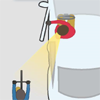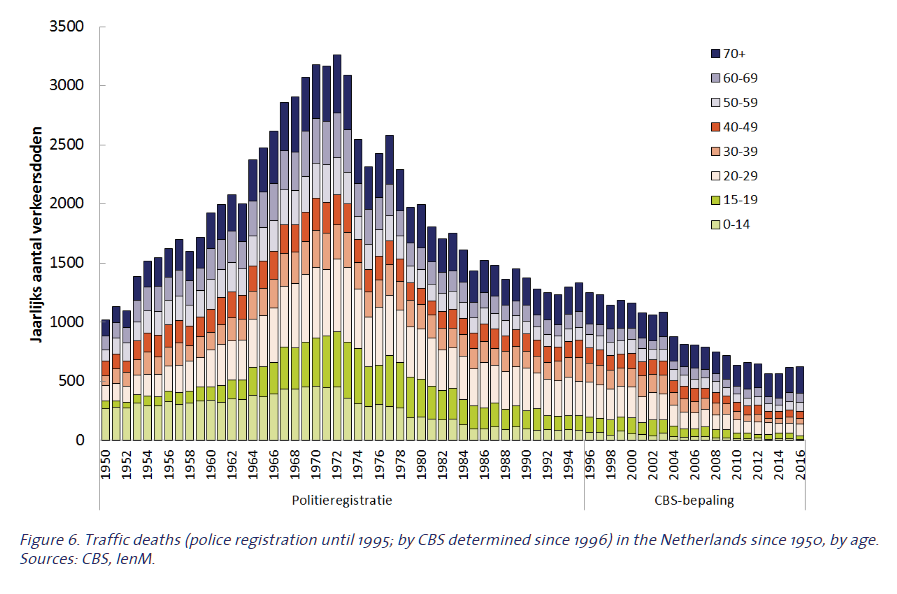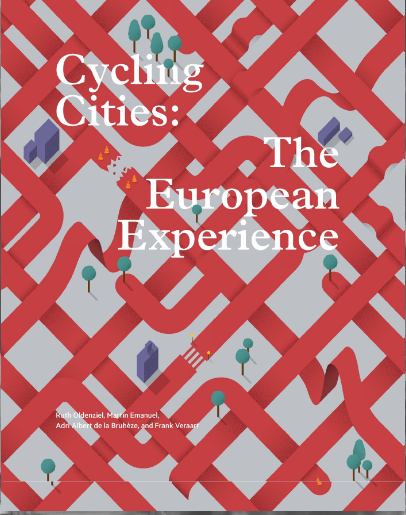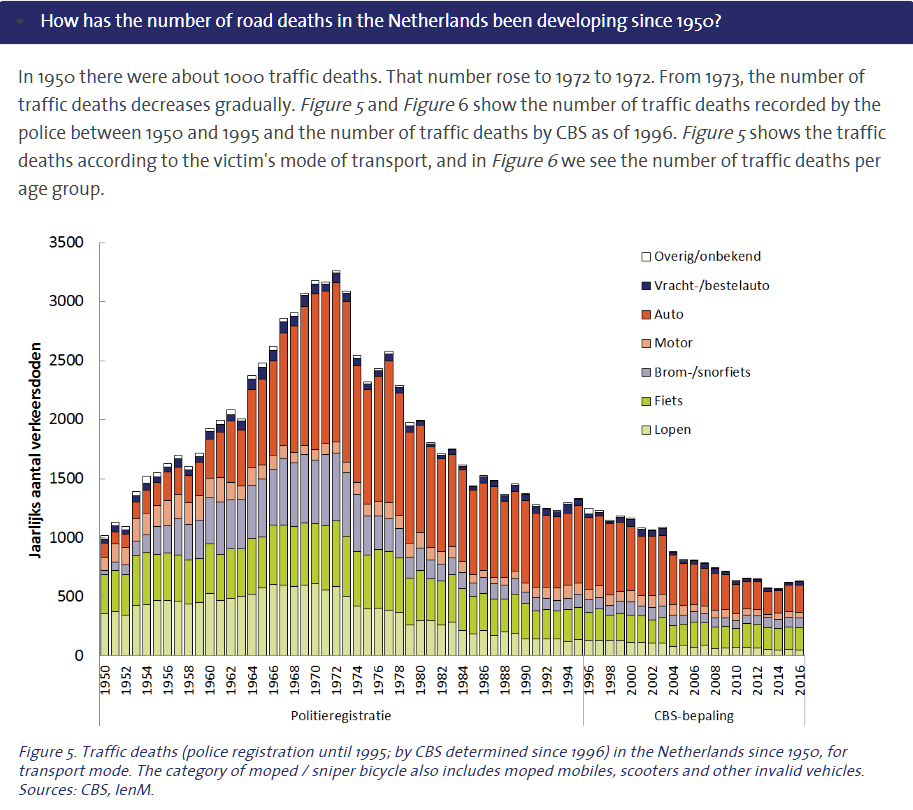
Road deaths in the Netherlands 1950-2016 by transport mode. Click on image to enlarge. Source: SNOV Factsheet -
Traffic deaths in the Netherlands.
Stop de Kindermoord 2019 & Beyond
See also:
Redesign Roads So That Motorists ‘Stop Killing Our Children,’ Urges Crowdfunded Film
by Carlton Reid, Forbes, Sept 21, 2019
„Pressiegroep Stop de kindermoord” - De Tijd, 1972
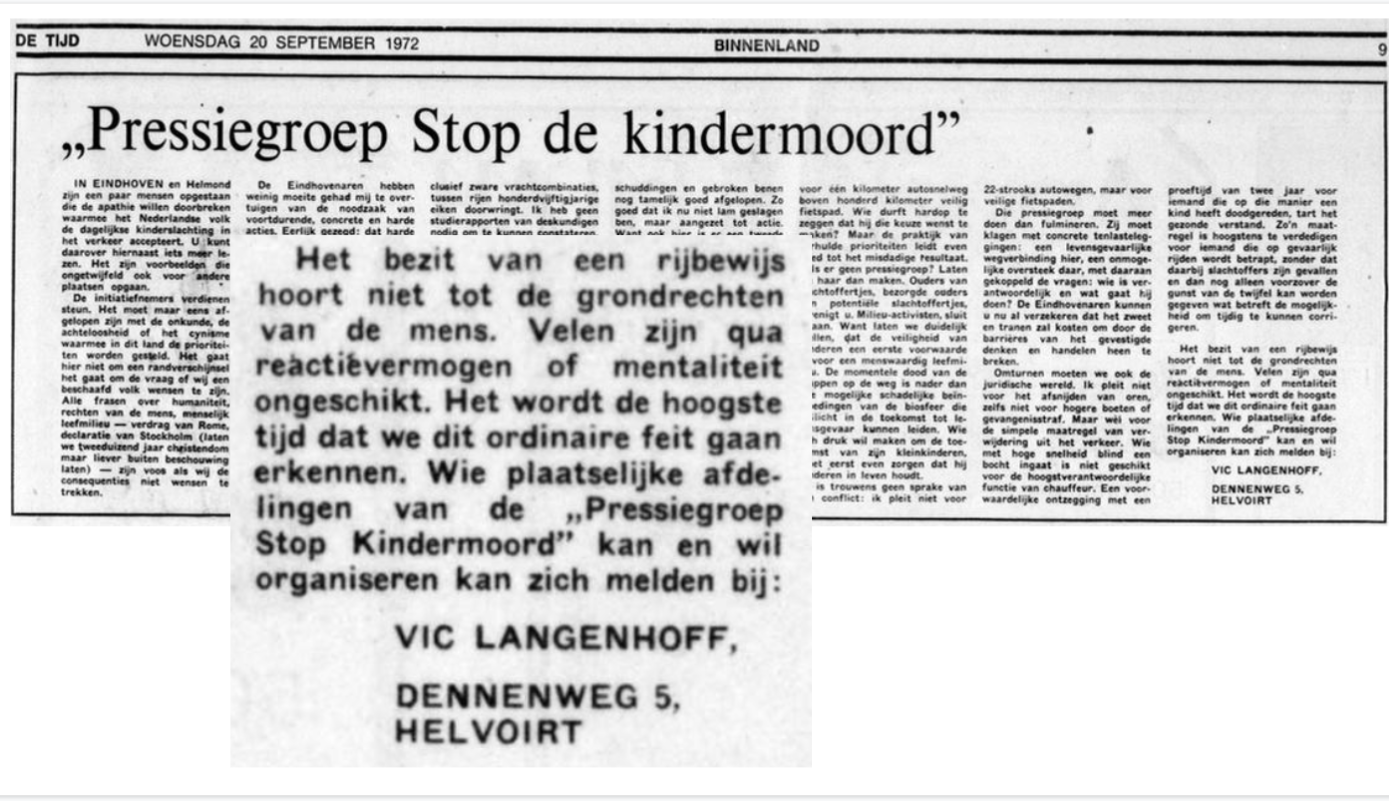
Article which inspired the Dutch road safety/multimodal road use movement: Stop the Child Murders. „Pressiegroep Stop de Kindermord", by Vic Langenhoff, De Tijd, 20 Sept 1972. [Stop the Child Murder Pressure Group]. Click image to enlarge. See texts & translations below.
Dutch transcription; English translation - Pressiegroep....
"Bicycle Dutch' Blog Post
The Baby Carriage Blockades
The Baby Carriage Blockades, by Peter Norton, TransAlt, Oct 10, 2019
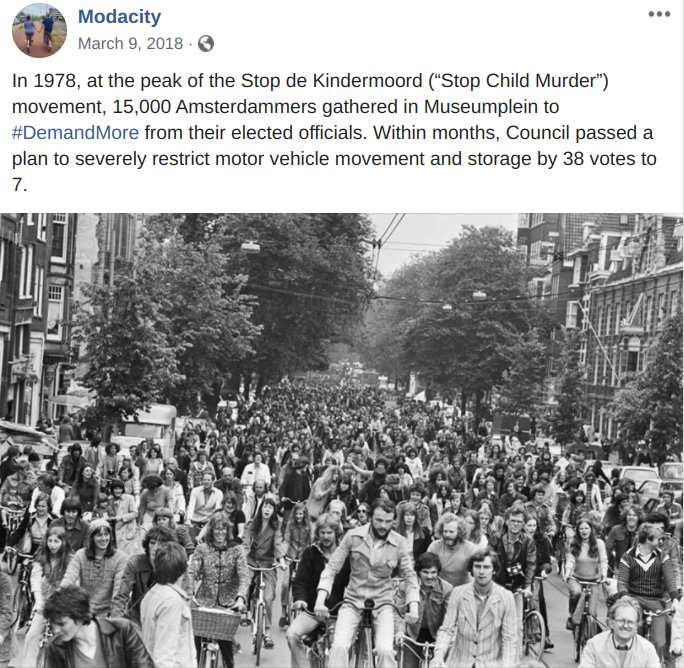
1978, at the peak of the Stop de Kindermoord movement, 15,000 protesters gathered in Museumplein to restrict autos in Amsterdam. FB Modacity
Stop de Kindermoord protest, 1972:
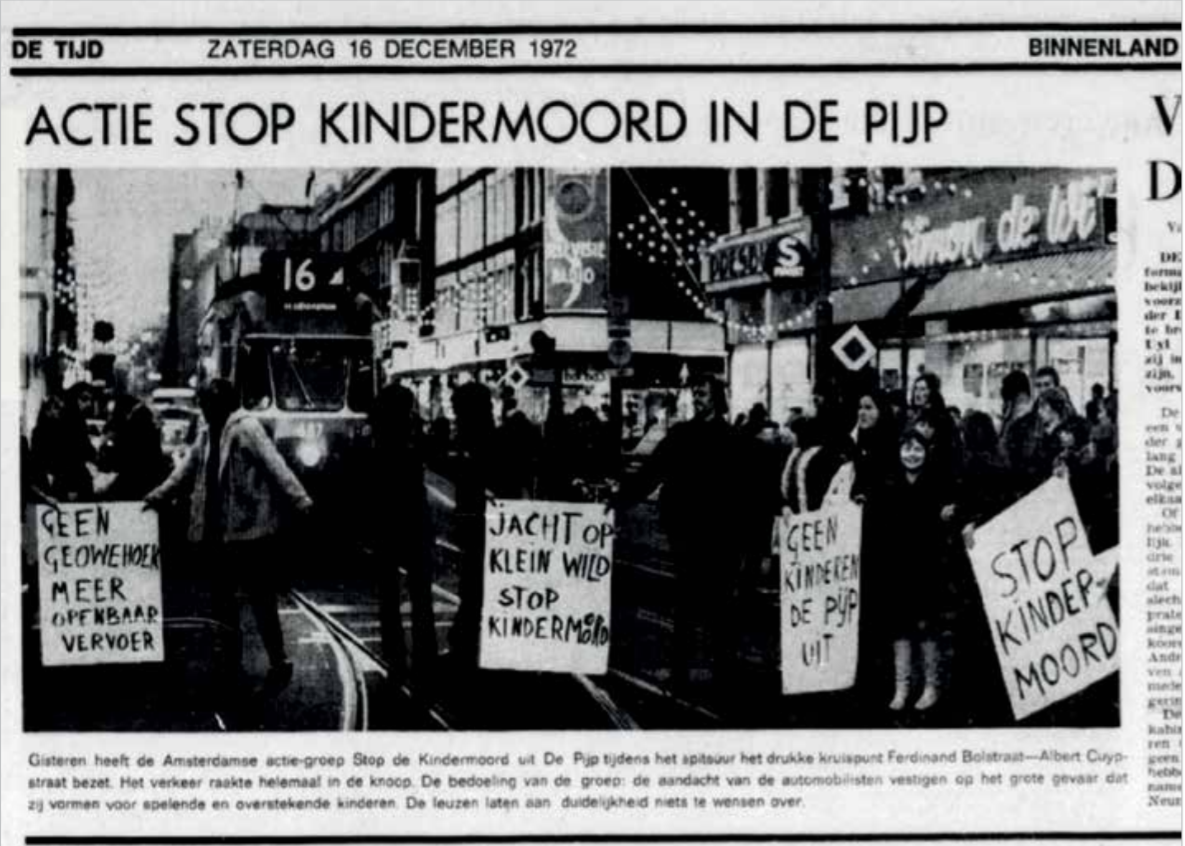
Actie Stop de Kindermoord in de Pijp, De Tijd, 16 Dec 1972. Credit: here [p.17]..
"Pressiegroep" article translation
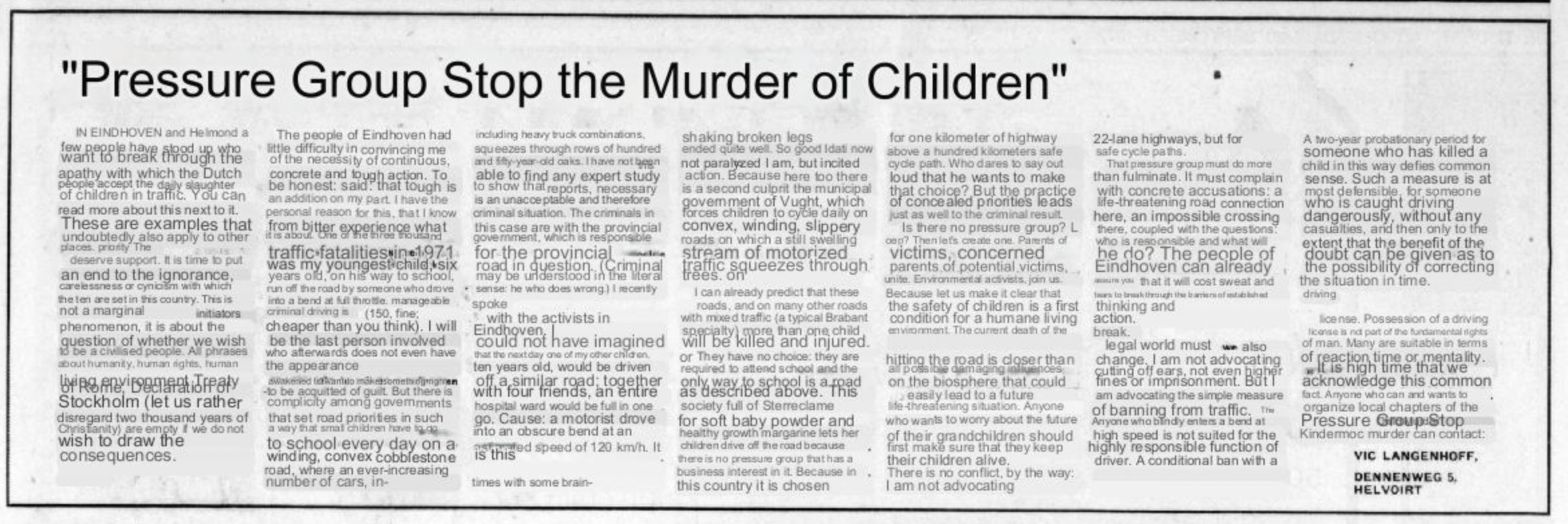
English translation of grieving Dutch parent Vic Langenhoff's 1972 call to action "Pressiegroep Stop de Kindermoord", De Tjid, 29 Sept 1972.
450 Child Bike Ped Deaths & Over 3200 Total per Year Drove Decades of Reforms in Holland - & Likely the 'Reach'
In the late 1960's & '70's, the Netherlands was far from the pedestrian and bicycling mecca it is today. Road deaths numbered in the thousands.
The accompanying traffic death graphs tell a story of incredible half-century progress in Dutch road safety, one that is all the more impressive because deaths and injuries from motor vehicle crashes fell dramatically despite significant population growth and an exponential rise in traffic.
As documented by SWOV of NL in Road deaths in the Netherlands (2016), road deaths totaled well above 3200 per year at the peak of the traffic carnage (see multi-decadal charts, figures 5 & 6). That was a time when Holland's economic recovery from World War II was finally arriving. As it did, the flood of autos, trucks, mopeds and scooters were crashing themselves and mowing down cyclists, pedestrians and especially children. Yet politicians, government planners - with public favor or acquiescence -- were also keen on motorizing the streets.
Bicyclists, foot traffic and children at play paid the price. Figure 5 bar graph depicts annual fatalities by transport mode of victim - motorist, cyclist, scooter/moped, pedestrian etc. Figure 6 charts the age distribution of each year's road fatalities. In 1972 NL's population was 13.33 million; in 2016 its population was 17 M, over 1/4th more, and multi-modal road traffic has soared. Yet now, Dutch road fatalities number around 600 per year. Only several are deaths by dooring.
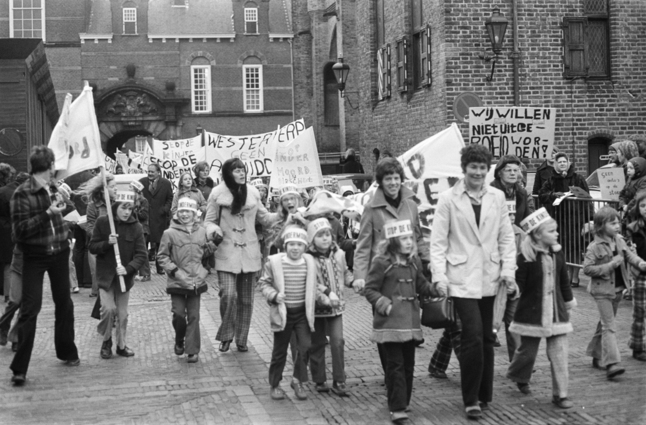
Stop de Kindermoord protest, The Netherlands. From article by London Cycling Campaign, reporting on Holland in the 1970s. Over decades, reforms stimulated by the protests have made Amsterdam & NL into a road sharing mecca. Click here for article & photo. Photo source: Dutch National Archive.
NL transport expert and anecdotal reports date the Dutch far hand method back at least to the early 1960s. [See archival Dutch newspaper articles which recommend the far hand method here.] Strict national vehicle exiting standards for licensing new drivers goes back many decades. It would be helpful to learn the political, legal & bureaucratic history answering when, why and how these standards were enacted. A history of this 'culture tool' has yet to be found in English. And it appears doubtful a recorded history exists at all, even in Dutch.
[But if you, Dear Reader, can help fill in this historical gap, please do share what you know, have or can discover with this Project by link, file, citation or contact!]
But my inference from this distance of time, continent and language, is that the Stop de Kindermoord road revolutionaries were part of the story. The rise of the Reach 'culture tool' coincided with demands for reform. Was the protest movement then instrumental in making far hand use a popular and perhaps officially favored practice in NL in the '70's? It did became so commonplace as to be thought merely "the way you open the car door."
That the 'Reach' practice has faded from practice and Dutch memory as NL's road culture and infrastructure transformed, making safety for all the norm and reality, should not be surprising. That today many Dutch citizens are unaware of the traffic carnage half a century ago, nor of those grieving parents and reformers who made Hollands roads now safe, is also not surprising. But this history is very much worth knowing, honoring and emulating.
Stop de Kindermoord is a lesson for the modern world. Protest and advocacy is essential to achieve universal and safe road sharing, by policy, enforcement, infrastructure, and culture change. Hopefully our work will be as successful but without so much loss and suffering.
Here is a sampling of sources which recount the 'Kindermoord' struggle:
Dutch campaigners explain why the Netherlands is now so cycle-friendly
The Guardian:
Cycling the city - How Amsterdam became the bicycle capital of the world, by Renate Van der Zee, 5 May 2015.
In the 1960s, Dutch cities were increasingly in thrall to motorists, with the car seen as the transport of the future. It took the intolerable toll of child traffic deaths – and fierce activism – to turn Amsterdam into the cycling nirvana of today
In this article, a Brit considers the NL experience, and compares it to UK now, especially with regard to school aged children:
A view from the cycle path: Stop the Child Murder
The a short report on the movement and the series of organizations which pursued its goals into the 21st century is found in the Dutch version of Wikipedia here: Stop de Kindermoord, Although in Dutch, Google Chrome browser can provide a reasonable translation.
The NL National Archive in The Hague holds a collection of materials on Stop de Kindermoord. See: "Stichting Pressiegroep Stop de Kindermoord / Stichting Kinderen Voorrang", number access 2.19.198.
But for a fine overview in the English language Wikipedia, see:
Note: Again, if you have information or sources bearing on the question of the 'far hand' method in the Netherlands or other countries where the practice might have arisen or spread [? Denmark, Sweden, Germany, France, Belgium, etc.], we welcome your help! Please share your knowledge with us via Contact.
-- Michael Charney, Dutch Reach Project
Revised: 7 October 2017.
Backstory of a Two Wheeled Revolution
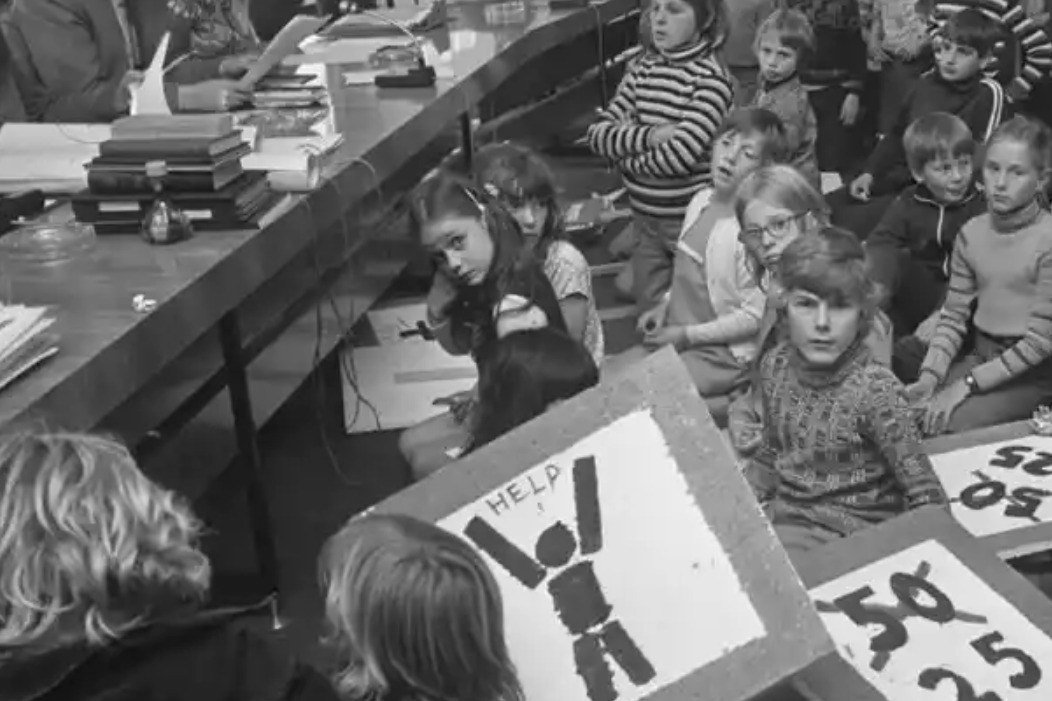
Stop de Kindermoord campaigners visit Amsterdam’s House of Representatives in 1972. How Amsterdam became the bicycle capital of the world, The Guardian, 5 May 2015..
De Pijp, Amsterdam 1972
Excerpt only.
Why & How It All Happened
Carnage Protest Poster
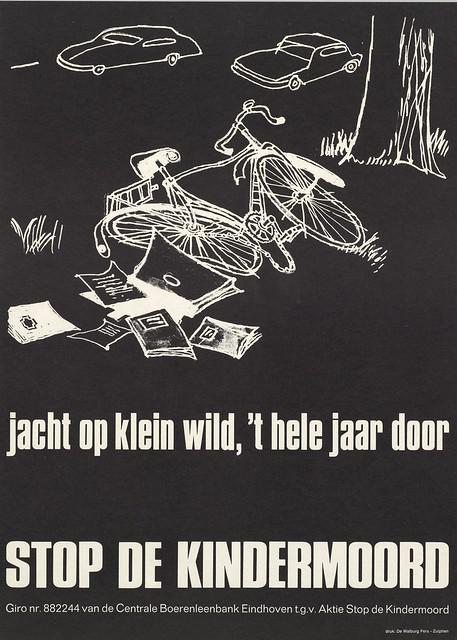
"Hunt for small game, all year round. Stop the childmurder" , bicycle activist organisation 'stop de kindermoord' , 1973 , The Netherlands. Posted on Reddit by u/muasta.
.
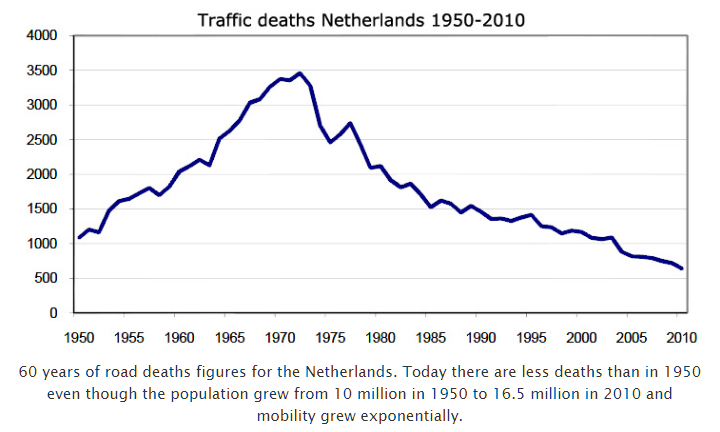
Since the year with the highest number of traffic deaths, 1972, the number of people killed yearly has fallen by 80 percent - though population increased by 1/3 & traffic exponentially. Source: Statistics Netherlands and the Ministry of Infrastructure and the Environment, from Cycling NL: Netherlands’ traffic deaths down again, 19 April 2011. Click image to enlarge.
& Read All the 'Threaded Replies
The Dutch make #urban #infrastructure like we make excuses. https://t.co/3DB66LrZfD #VisionZero #walking #cycling pic.twitter.com/MPKieTUvyE
— #VisionZero Canada (@VisionZeroCA) January 15, 2016
Environmental Justice Atlas: StK
On NL Bike History
5 perplexing facts about cycling in the Netherlands, Szandra Karacsony, June 29, 2016, Medium.
Stop de Kindermoord Poster, NL
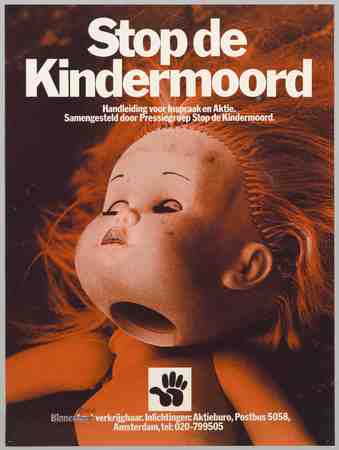
Stop de Kindermoord, poster by Henk Franzen, 1980(?), Amsterdam, NL. Credit: International Institute of Social History.
On the Founding & Success of Stop de Kindermoord
On this day in 1971, Simone Langenhoff, aged 6, was killed while cycling to school; hit by a speeding driver.
Her death and the movement started by her father, Vic Langenhoff, a newspaper journalist, changed an entire country and saved thousands of Dutch lives. Here's how 🧵 pic.twitter.com/dlNbC1FFoW
— Adam Tranter (@adamtranter) October 14, 2024
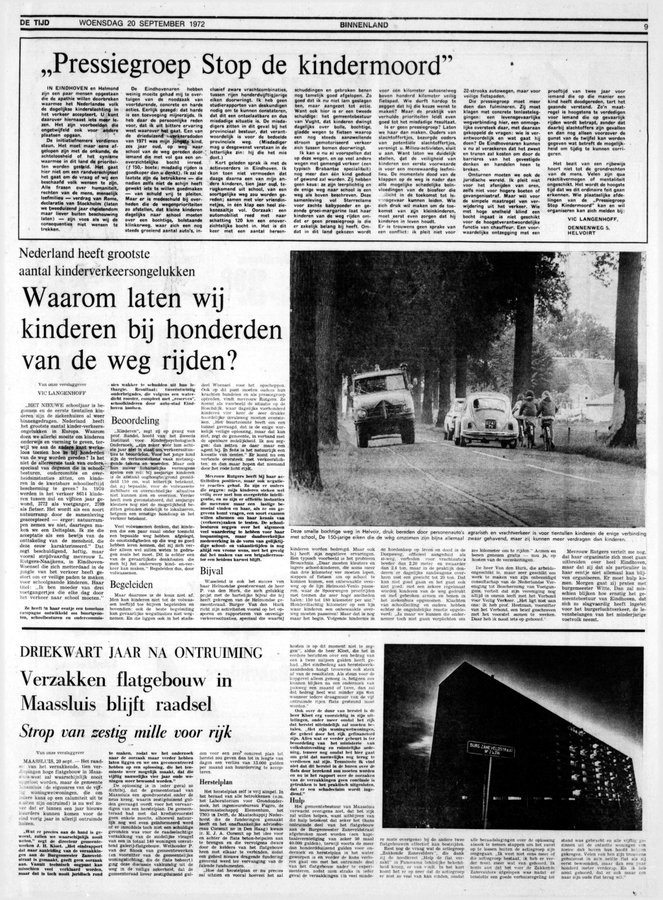
Full newspaper page with Vic Langenhoff's "Pressiegroep Stop de Kindermoord" article and an associated report on child traffic deaths. De Tijd, 29 Sept 1972.
Amsterdam, 1970s
In fear of change, many cities say 'we are not Amsterdam'.
Well, neither was Amsterdam.Making your streets human oriented is a CHOICE.
Yes, it takes political consistency and perseverance.
But it is something ANY city can do!~ Zeilstraat, Amsterdam (1970s)#NoExcuses pic.twitter.com/9dGzNbbmQo
— Cycling Professor (@fietsprofessor) June 12, 2020
BBC Video on Road/Bike Safety in Europe
Interview with activist Dutch mother & politician Maartje van Putten @ 1 min 30 sec., who helped lead the Stop de Kindermoord movement in the 1970s.
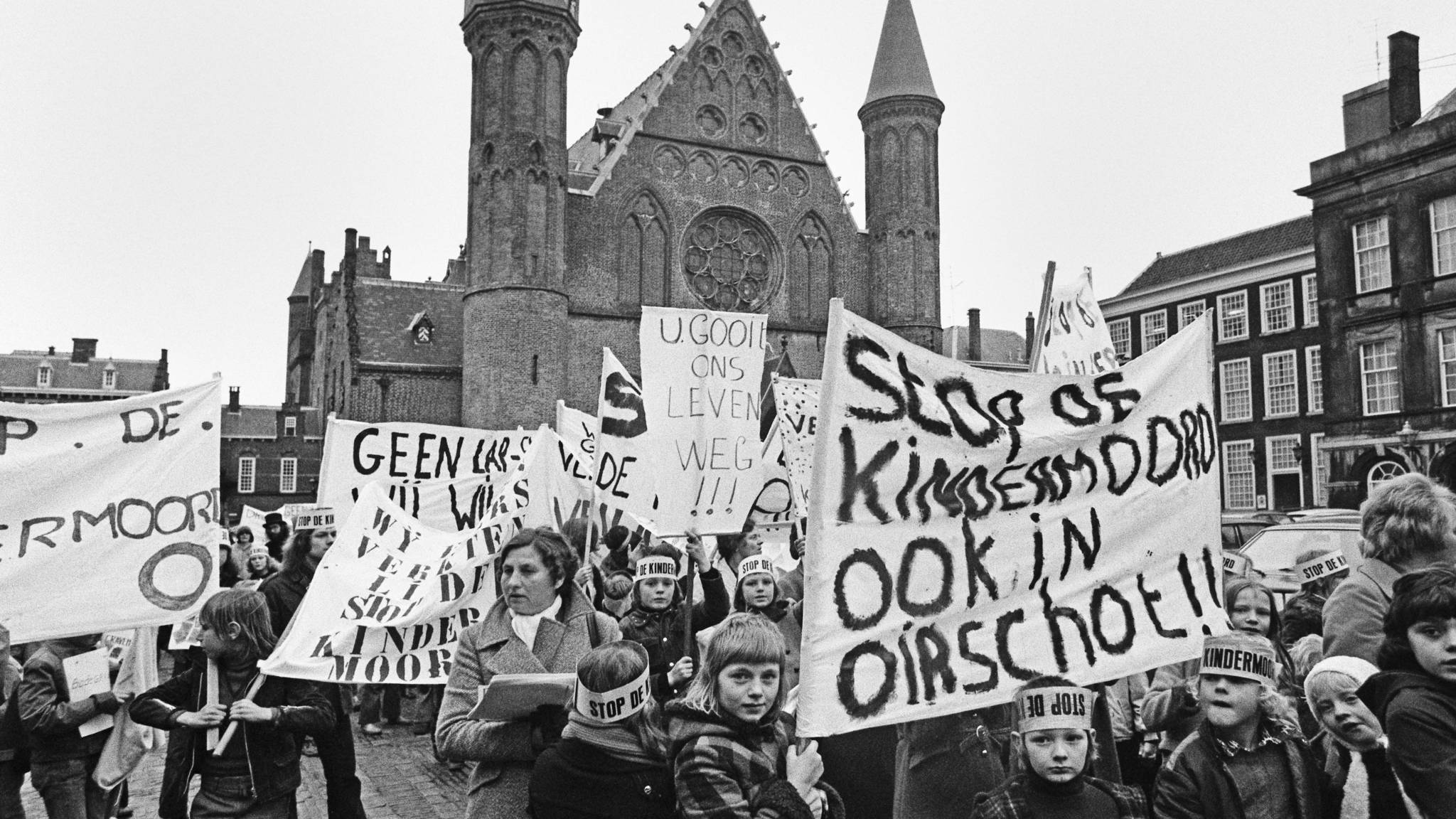
Stop de Kindermoord protest, NL.
Additional Sources
Sources c/o Adam Tranter:
The Guardian interview with Maartje van Putten, former MEP
Road collision data (children aged 0-15)
Delft Cycle Network
Book "Cycling Cities" Examines Bicycling History in 14 European Cities
Car Sick Protests in USA
The Hidden History of American Anti-Car Protests, by Peter Norton via CityLab, October 8, 2019.
